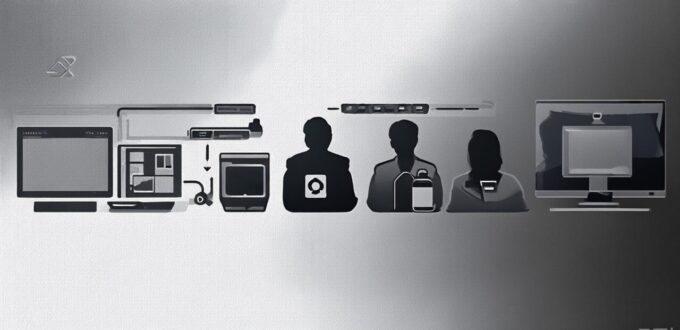Operating Systems: The Foundation for Software Development
An operating system (OS) is a type of computer software that manages the hardware and software resources of a computer. It provides a platform for other software to run on, as well as a set of tools and services to help users interact with their computers. Some popular examples of operating systems include Windows, macOS, Linux, and Android.
Productivity Tools: Boosting Efficiency and Productivity
Productivity tools are computer software applications that help users manage tasks, collaborate with others, and stay organized. Examples of productivity tools include word processors (such as Microsoft Word), spreadsheets (such as Microsoft Excel), presentation software (such as Microsoft PowerPoint), and project management tools (such as Trello or Asana).
Programming Languages: The Language of Software Development
A programming language is a set of instructions that can be used to create computer programs. Programming languages provide developers with a way to express their ideas in a format that can be interpreted and executed by computers. Some popular examples of programming languages include Java, Python, C++, and JavaScript.
Mobile Applications: Bringing Software to Your Fingertips
A mobile application is a type of software that is designed to run on mobile devices such as smartphones and tablets. Mobile applications can be used for a wide range of purposes, including entertainment, communication, productivity, and education. Some popular examples of mobile applications include Instagram, WhatsApp, Uber, and Duolingo.
Case Studies: Real-Life Examples of Software Development in Action

To illustrate the concepts discussed above and provide real-life examples of software development in action, let’s look at three case studies: the development of a new operating system, the creation of a productivity tool for remote workers, and the design of a mobile app for fitness tracking.
1. Development of a New Operating System: Windows 10
Windows 10 is a new operating system developed by Microsoft that was released in 2015. The development team faced a number of challenges, including ensuring compatibility with existing software and hardware, improving security features, and enhancing user experience. Some key features of Windows 10 include the ability to run multiple applications at once, Cortana, a virtual assistant that can perform voice-activated tasks, and a redesigned start menu.
2. Creation of a Productivity Tool for Remote Workers: Trello
Trello is a productivity tool developed by Atlassian that allows users to create and manage projects collaboratively. It was designed specifically for remote workers who need to stay organized and communicate effectively with team members. Key features of Trello include the ability to create boards, lists, and cards to represent tasks and projects, as well as comments, attachments, and due dates to help teams stay on track.
3. Design of a Mobile App for Fitness Tracking: MyFitnessPal
MyFitnessPal is a mobile app developed by Under Armour that allows users to track their food intake, exercise, and weight loss progress. The development team had to consider factors such as user experience, data privacy, and integration with other fitness devices. Key features of MyFitnessPal include the ability to scan barcodes and log meals quickly and easily, set goals and track progress over time, and connect with other fitness apps and devices.
Summary: Software Development is a Complex Process
Software development is a complex process that requires careful planning, design, testing, and implementation. By understanding the different types of software and their features, as well as the challenges faced by development teams, we can better appreciate the importance of effective communication, collaboration, and user experience in creating successful software solutions.
